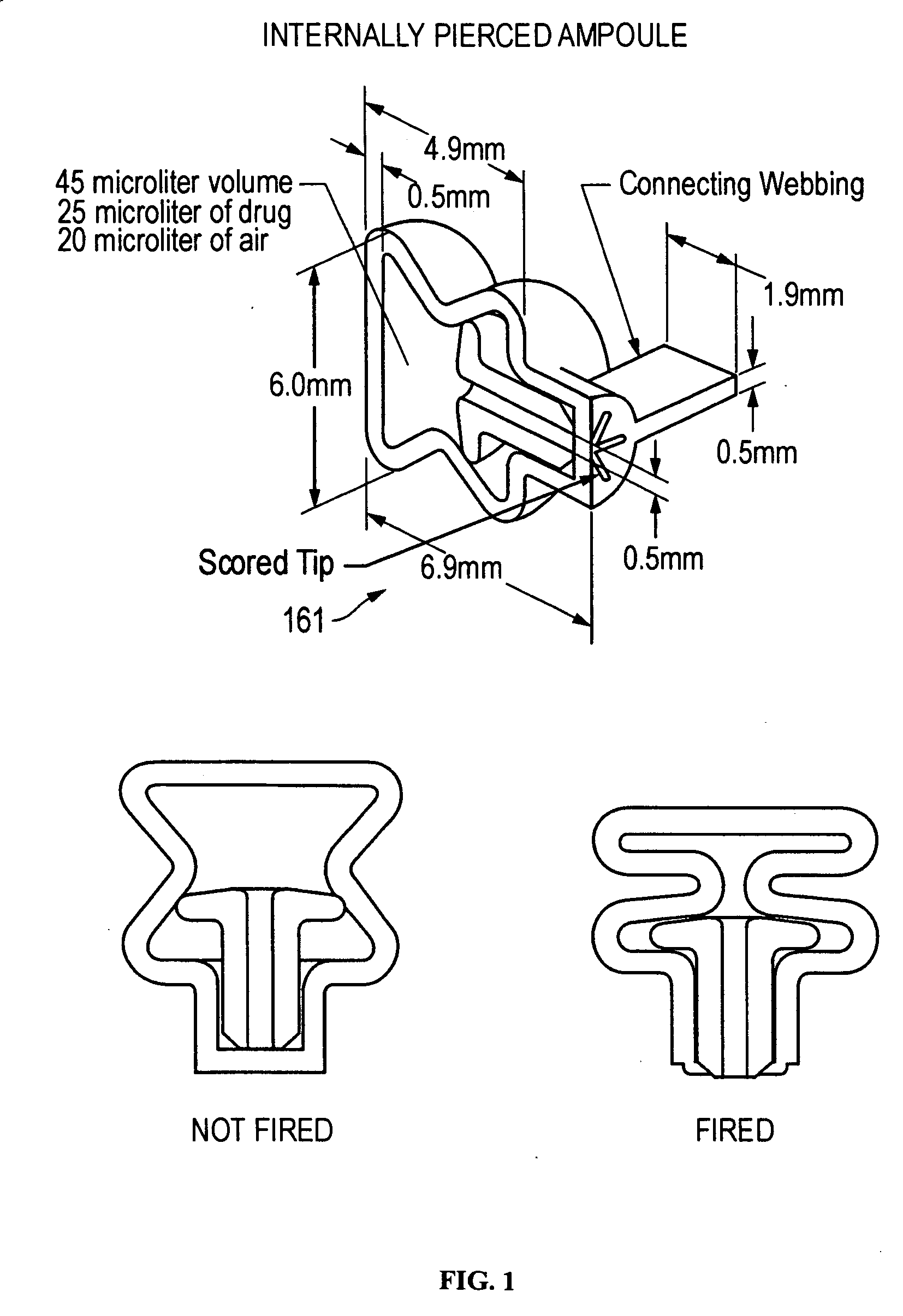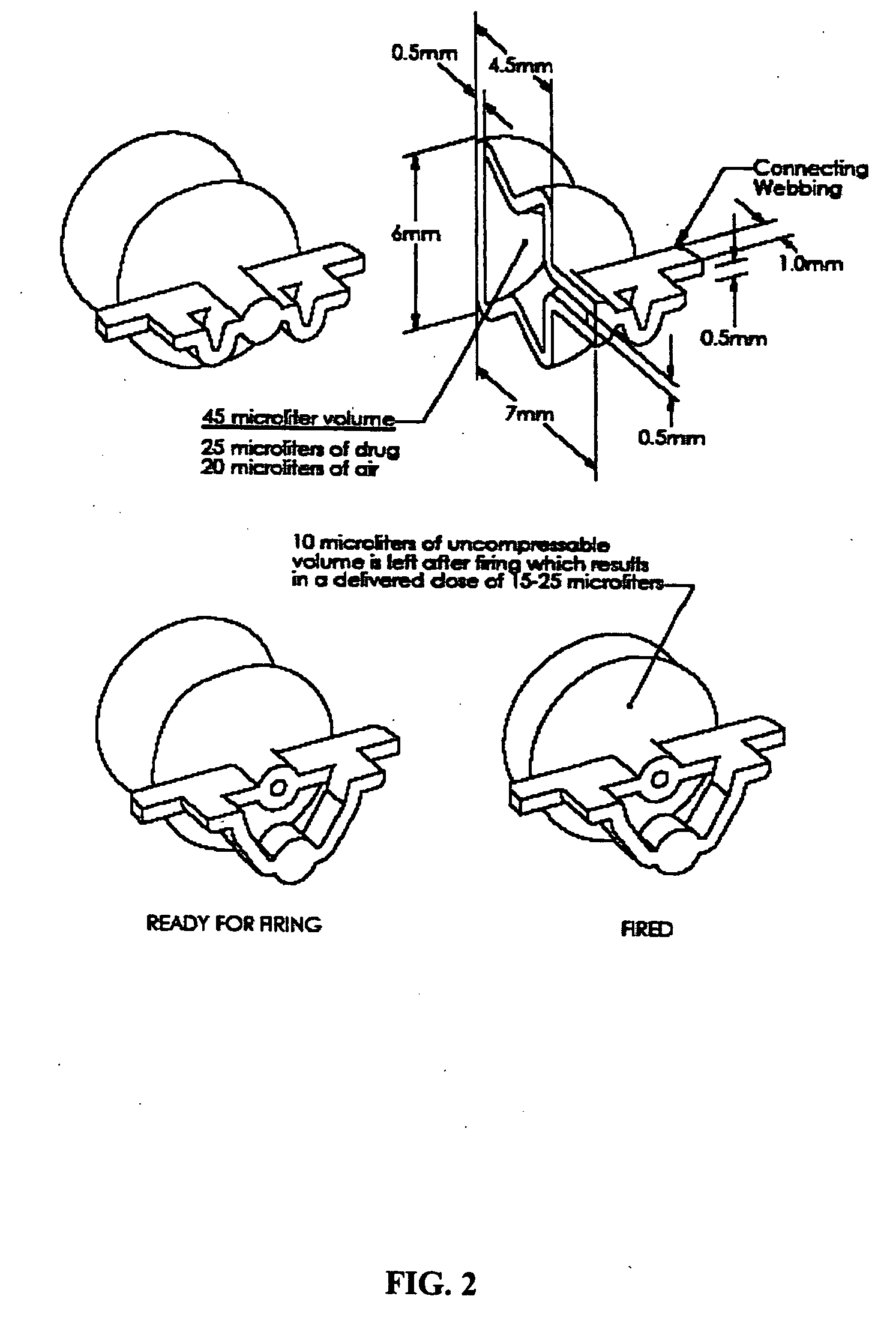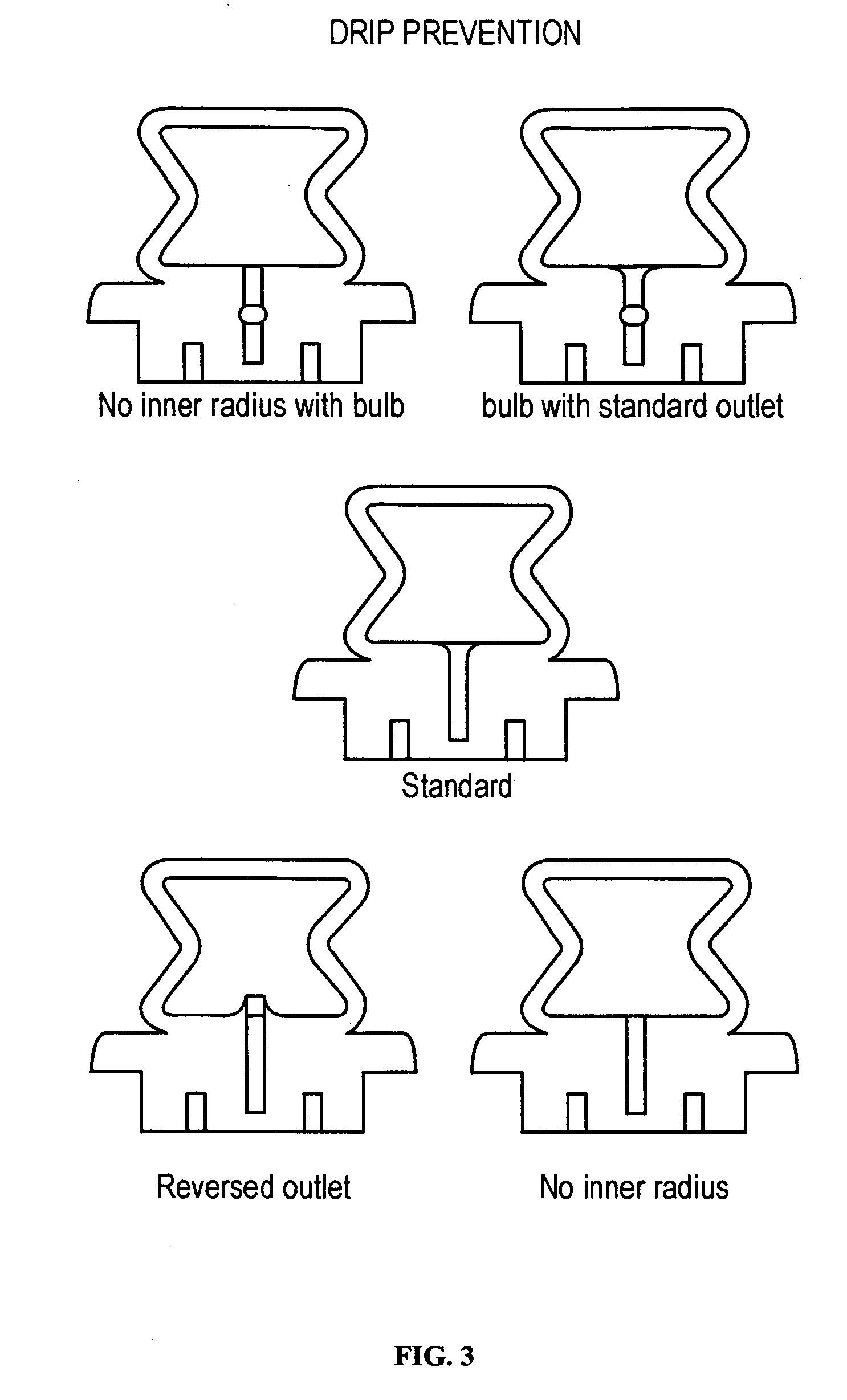[0011] The precise and repeatable dosing features of the presently disclosed devices overcome many of the disadvantages associated with known methods for dispensing substances to, for example, the eye of a user. In certain embodiments, the device makes the administration of the desired substance, for example an
ophthalmic drug, simpler, faster, more convenient,
safer, and less costly. In addition, in certain embodiments, the devices disclosed herein offer one or more of the following advantages:
cost savings (reduces waste from over administration); improved
efficacy from exact dosage administration; convenience and ease of use; improved
patient compliance; improved safety; no cross
contamination; reduces or eliminates the need for preservatives, thereby reducing the
irritation and stinging the user would otherwise experience from the
preservative;
improved performance due to multi-unit dosing; and improved ability to meet the needs of elderly, incapacitated, and pediatric patients. In certain embodiments, this device also reduces potentially unpleasant side effects from the administration of certain drugs, and difficulties associated with eye dropper delivery systems.
[0012] For example, in the ophthalmic industry some
eye drop units of liquid on the market are marketed as single-dose vials. These single-dose vials are manipulated and administered to the eye in the same manner as an eye drop
bottle with all the same shortcomings. An important
advantage of the presently disclosed device is that the ampoules used in the device to dispense a substance cannot be repeatedly used by the user. The one-time use nature of these ampoules eliminates the reuse problem common with other marketed eye drop units, and the risks associated with improper reuse of unit doses. Another
advantage of the presently disclosed device is that it utilizes ampoules that maintain the
sterility of the substance administered to the user until the moment of use. Since the sterile substance is not exposed to air until actual usage, loss of
sterility is avoided. In addition, the mechanism of dispersal of the ampoules disclosed herein will prevent dispersion of the substance from any ampoules that are defective or have been damaged.
[0013] Another important
advantage of the presently disclosed devices is that they will dispense precise amounts of the substance to a precise location in the eye,
nose or ear, thereby reducing the risk of over or under medication. The more precise
delivery system of the present disclosure also reduces waste from excessive or error prone delivery normally encountered with traditional eye dropper bottles, or other devices for delivery of drugs to the eye, nose or ear.
[0015] In a preferred embodiment, the ACH is a disk, and in other preferred embodiments, the ACH is a tube or rectangular box. In certain preferred embodiments, the piercer is an integral part of the
ampoule, while in other embodiments a compartment or ACH in the
ampoule comprises the piercer. Preferably the substance is released or dispersed from the
ampoule by compressing the ampoule with a
piston,
plunger, or roller, while simultaneously piercing the ampoule either internally or externally. In other embodiments, the ampoule further comprises a head space of air or gas, wherein compression of the ampoule provides the force required to activate the piercer, and the resulting expansion of the
compressed air or gas assists in dispersing the substance out of the ampoule.
[0017] The device can also further comprise a programmable
microprocessor, preferably a
Printed Circuit Board (PCB) or an
Application Specific Integrated Circuit (ASIC) coupled to visual display interface, preferably a
Liquid Crystal Display (LCD) or Light Emitting Diodes (LED), and audible signals which can be programmed to provide the user with prescription compliance notification and tracking, the operational status of the device, and the substance contained in the device. In other embodiments, the device comprises a magnified inspection window to inspect the ampoule
cartridge in the device, so that the user may visually determine the type of substance loaded in the device, the number of remaining ampoules, and whether an ampoule has been administered by the device.
[0018] Preferably, the devices disclosed herein are used to administer one or more therapeutically effective substances to a user, for example the eye, nose, or ear of a user. In preferred embodiments, the device is used to administer one or more
ophthalmic drugs to the eye of a user. In preferred embodiments, the device used for
ophthalmic drug administration further comprises an eye cup that is preferably adapted to conform to the shape of the user's facial area surrounding the eye socket of the user. In preferred embodiments, the device comprises an eye cup storage space for a reusable eye cup. In other preferred embodiments, the eye cup is an Integrated
Ampoule Ophthalmic Dispenser (IAOD), and the device may optionally comprise a spring loaded IAOD ejection mechanism. In preferred embodiments, the caregiver is not required to physically touch the IAOD either before or after the administration process, reducing cross-contamination risks.
 Login to View More
Login to View More  Login to View More
Login to View More 


